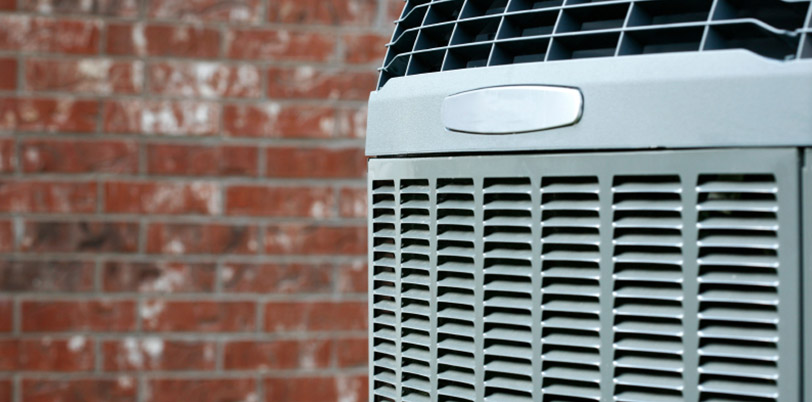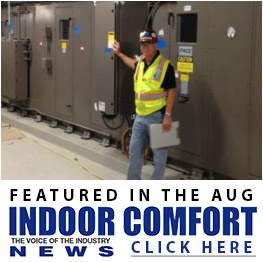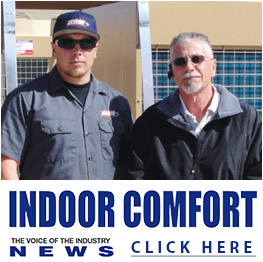
At Bacco Mechanical Inc., HVAC Preventive Maintenance (PM) is not a necessary evil; it’s a means to an end. That end is lowering your “total cost” – which involves energy consumption, equipment replacement and life spans, unscheduled maintenance and repairs, as well as preventive maintenance. This cluster of variables is something we call “the mix”. As a facility manager or owner, it’s something you call “your job”.
Every PM program is literally tailored to your budget and equipment requirements. Year one may be focused on bringing existing equipment up to optimum efficiency, while subsequent years may simple require minimal maintenance. Whatever the case, Bacco Mechanical PM Program will help you answer important questions like:
- How thorough should your PMs be?
- Should every facility receive the same level of maintenance?
- When does the cost of a PM outweigh its benefit to equipment life or energy consumption?
- When should you replace equipment as a cost-avoidance strategy?
- Should you add service labor or parts coverage?
- Does it make sense to extend the original warranty beyond the first year on all new equipment?
Ultimately you determine the level of preventive maintenance and service you will receive. As part of the process, a Bacco Mechanical representative will consult with you to design and effective program, complete with options, strategies and information that will help you “optimize your mechanical assets."
While your system is operating
- Inspect for gas leaks in gas furnaces.
- Inspect burner assembly – clean and adjust as needed.
- Inspect ignition system and safety controls – clean and adjust as needed.
- Inspect heat exchanger or heating elements.
- Inspect flue system – check for proper attachment to the furnace, any dislocated sections, and for signs of corrosion. Replace if necessary.
- Inspect control box, associated controls, wiring and connections.
- Clean or replace air filters.
- Inspect conditioned airflow system (duct work).
- Monitor system starting characteristics and capabilities.
- Listen for abnormal noise.
- Search for source of unusual odors.
- Monitor air conditioning and heat pump systems for correct refrigerant change.
- Measure outdoor dry bulb temperature
- Measure indoor dry and wet bulb temperature.
- Measure high and low side system pressures.
- Monitor gas furnace for correct line and manifold gas pressure – make adjustments as needed.
- Measure temperature rise and adjust airflow as needed.
- Check vent system for proper operation.
- Monitor system for correct line and load volts/amps.
- Monitor system operation per manufacturer’s specifications.
- Provide system operation report and recommend repairs or replacement as necessary.
NOTE: Bacco recommends that all maintenance and service work be performed by a professional air conditioning and heating contractor that holds the appropriate credentials to install and service air conditioning and heating equipment.
What We Can Service!
- Air systems
- Coils
- Chillers
- Cooling Towers
- Condensers
- Boilers
- Controls
- Pumps
- Heat pumps
- Exhaust and transfer fans
- Humidifiers
- Fan coils and unit heaters
- Furnaces
- Packaged terminal air conditioners
- Rooftop units
- VAV and other boxes
- HVAC water distribution system
- Steam systems
- Miscellaneous
Our Checklist
Heating Units:
- Inspect heat exchanger.
- Inspect and operate heating controls, calibrate and program thermostat.
- Clean pilot orifice, adjust flame.
- Check and adjust main burners for proper combustion.
- Inspect and operate furnace safety devices.
- Check draft and ventor motor assembly.
- Inspect drive-sheaves, pulleys, and belts. Adjust tension.
- Lubricate all motors and shaft bearings.
- Change filters.
- Check and adjust air-floe, and temperature deferential.
- Check unit smoke detector, clean filter – if applicable.
Air Conditioning Units:
- Check compressor efficiency.
- Check refrigerant level.
- Clean condenser coil.
- Clean condensate pan and trap.
- Change filters.
- Inspect contactors and wiring.
- Inspect drive-sheaves, pulleys and belts.
- Check, calibrate, and program thermostat.
- Check unit smoke detector, clean filter – if applicable.
- Check safety disconnect, laser-temp. check across contacts.

